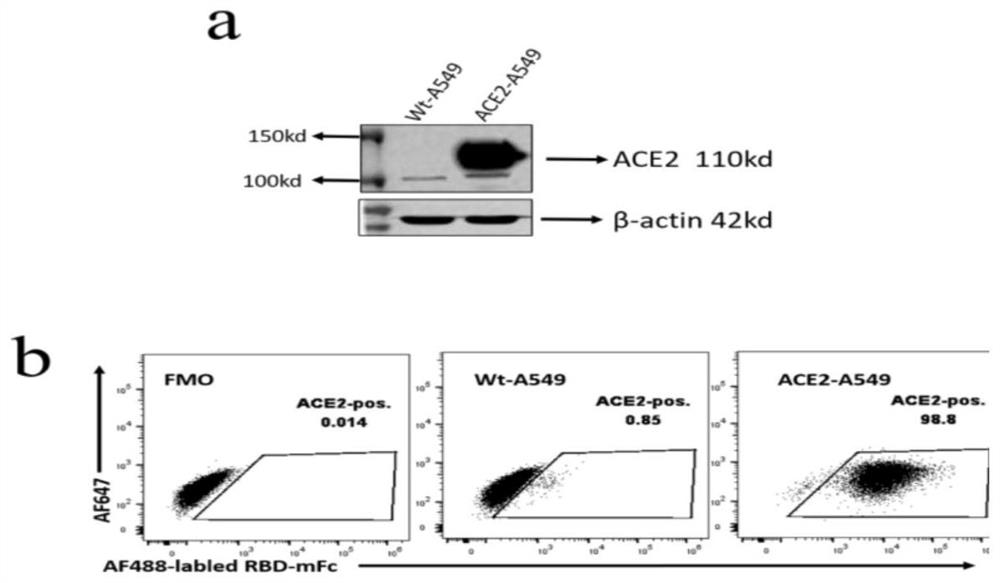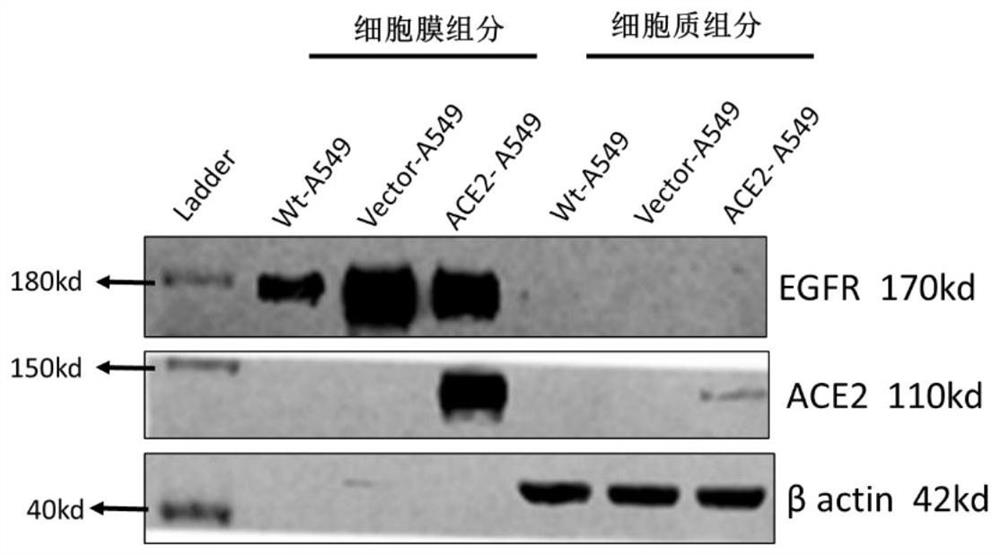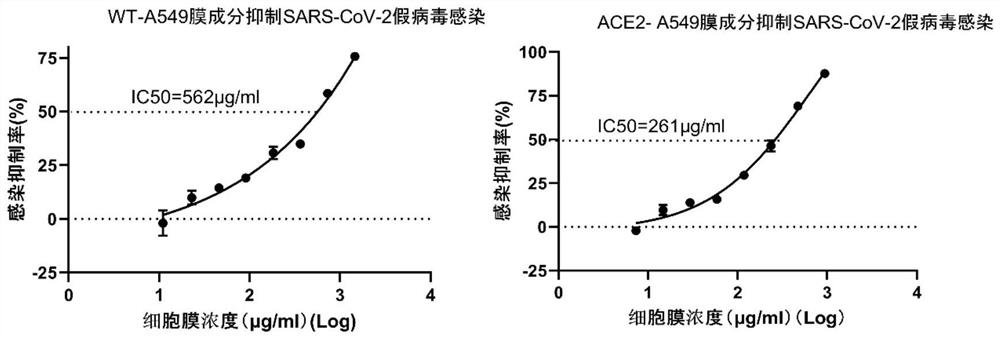Method for preventing and treating respiratory infectious diseases by using respiratory epithelial cell membranes and application
A technology of epithelial cells and respiratory tract, applied in the fields of biotechnology and medicine, can solve the problem of undisclosed inhibition of viral infection
- Summary
- Abstract
- Description
- Claims
- Application Information
AI Technical Summary
Problems solved by technology
Method used
Image
Examples
Embodiment 1
[0084] Example 1: Construction of a lung epithelial cell line ACE2-A549 stably expressing ACE2 protein
[0085] The lung epithelial cell line A549 (purchased from ATCC#CCL-185) is derived from human non-small cell lung cancer epithelial cells, and is the main in vitro cell model for studying pathogen infection of respiratory infectious diseases.
[0086] The human ACE2 gene (SEQ ID NO: 1) was synthesized in vitro by gene synthesis technology, the ACE2 gene was inserted into the lentiviral vector Phage-puro (addgene #118692), and combined with the packaging plasmid Pspax2 (addgene #12260) and the envelope plasmid PMD2 .G (addgene#12259) was co-transfected into 293T cells, and the lentiviral supernatant was collected 48 hours later. A549 cells were infected with recombinant ACE2 lentivirus, centrifuged for 2 hours, and then cultured for 24 hours to select the A549 cells expressing ACE2 with puromycin. The drug was added continuously for 14 days, and finally ACE2-A549 cells were ...
Embodiment 2
[0089] Embodiment 2: separation, preparation of cell membrane
[0090] In this example, the cell membranes of the following three cell lines were separated and prepared respectively: wild-type A549 (Wt-A549), empty vector control A549 (vector-A549), and A549 stably expressing ACE2 (ACE2-A549).
[0091] Cell membrane samples were extracted, separated, and prepared using a cell membrane separation kit (Thermo fisher scientific #89842). The brief experimental steps are as follows: 4×10 6 Cells were plated in a 10 cm cell culture dish, and a total of 5 dishes were prepared for a total of 2×10 7 number of cells. After 12 hours of conventional culture in a 37°C cell culture incubator, wash with cold PBS buffer three times, and then collect the cells with a cell scraper for future use. After washing the cells twice with the cell washing solution included in the kit, treat the cells with the permeabilization buffer for 10 minutes to release the cytoplasmic components. After centri...
Embodiment 3
[0093] Example 3: Utilize cell membrane or its components to inhibit SARS-CoV-2 infection in vitro
[0094]In this embodiment, a coronavirus pseudovirus system is used to detect pseudovirus-infected cells at the cell level. Utilize novel coronavirus (SARS-CoV-2) spike protein gene (Spike, SEQ ID NO: 4, refer to GenBank: QHD43416.1 expression plasmid pcDNA3.1-spike (produced by Shanghai Jierui Biotechnology Co., Ltd. Spike whole gene Synthesized and cloned into pcDNA3.1 expression vector) and HIV-1 backbone plasmid with luciferase reporter gene (pNL4-3-Luc-ΔEnv, NIHAIDS Reagent Program #3418) co-transfected 293T cells, harvested after 48 hours Cell culture supernatant containing coronavirus pseudoviruses.
[0095] 293T cells expressing ACE2 were infected with the supernatant containing pseudovirus (ACE2-293T cell line construction method is the same as ACE2-A549), if the pseudovirus successfully infects the target cells, by detecting the expression level of the reporter gene l...
PUM
 Login to View More
Login to View More Abstract
Description
Claims
Application Information
 Login to View More
Login to View More - R&D
- Intellectual Property
- Life Sciences
- Materials
- Tech Scout
- Unparalleled Data Quality
- Higher Quality Content
- 60% Fewer Hallucinations
Browse by: Latest US Patents, China's latest patents, Technical Efficacy Thesaurus, Application Domain, Technology Topic, Popular Technical Reports.
© 2025 PatSnap. All rights reserved.Legal|Privacy policy|Modern Slavery Act Transparency Statement|Sitemap|About US| Contact US: help@patsnap.com



